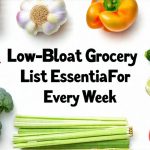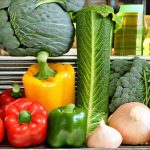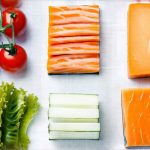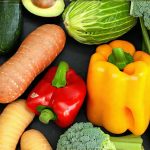Nausea is debilitating. It’s more than just feeling unwell; it can completely disrupt daily life, making even simple tasks feel monumental. For many people, this includes grocery shopping and, crucially, planning what groceries to buy. When the thought of food itself triggers discomfort, building a list that supports your needs – and doesn’t exacerbate symptoms – requires thoughtful consideration. It’s about moving beyond habitual shopping patterns and focusing on foods that are gentle on the stomach, easy to digest, and appealing enough to actually want to eat when nausea allows. This isn’t simply about avoiding triggering foods; it’s about proactively choosing options that nourish your body during a difficult time.
The challenge lies in the fact that nausea is incredibly personal. What one person finds soothing, another might find unbearable. Smells, textures, and even temperatures can all play a role. Therefore, grocery list planning isn’t just about food categories; it’s about understanding your specific sensitivities and building a plan around them. This article will explore strategies for creating grocery lists that acknowledge the unique challenges of navigating nausea, focusing on both what to include and how to approach the shopping process itself. The aim is to empower you to take control of your nutrition even when feeling your worst, ensuring you have access to foods that can provide comfort and support.
Understanding Nausea & Dietary Considerations
Nausea isn’t always about the food itself; often it’s tied to strong smells or textures. This means a grocery list should prioritize bland, easily digestible options while acknowledging potential sensitivities. Think beyond just avoiding “bad” foods – consider what appeals when you have an appetite, even if that appeal is minimal. For example, someone experiencing nausea might crave something cool and refreshing like watermelon, while another might prefer the comforting simplicity of plain toast. There’s no one-size-fits-all solution. Dietary considerations during nausea should focus on minimizing digestive stress. This often means reducing fat intake (as fats take longer to digest), choosing simple carbohydrates over complex ones, and opting for smaller, more frequent meals rather than large portions. Protein is important but can be difficult to tolerate in large quantities; lean protein sources are generally better tolerated. Hydration is also critical; dehydration can worsen nausea, so including fluids – water, electrolyte drinks, or even diluted juice – on your list is essential. If you experience soft stools alongside nausea, consider dietary adjustments.
It’s vital to remember that food aversions and preferences can change rapidly with nausea. A food you normally enjoy might suddenly become repulsive, while something previously disliked could offer unexpected comfort. This fluctuating nature of appetite makes flexibility key when planning grocery lists. Don’t rigidly adhere to a specific plan; instead, aim for a range of options that cater to your potential cravings (or lack thereof) at any given moment. Prioritizing variety, even within the confines of bland foods, can help prevent monotony and encourage some level of intake. Understanding gut function is also important in managing nausea effectively.
Building Your Baseline List
A “baseline” list consists of items you reliably tolerate when nausea is mild or manageable. This forms the foundation of your grocery shopping and provides a safety net during more challenging times. It’s not about deprivation; it’s about having readily available options that won’t contribute to discomfort.
- Bland carbohydrates: Plain crackers, toast, rice cakes, oatmeal (plain), white rice, mashed potatoes (without butter or cream)
- Lean proteins: Chicken breast (baked or boiled), fish (steamed or baked), tofu, eggs (scrambled or hard-boiled). Avoid fried or heavily seasoned options.
- Fruits: Bananas, applesauce, watermelon, grapes. These are generally easy to digest and provide hydration.
- Vegetables: Steamed carrots, green beans, potatoes. Again, avoid strong flavors or excessive seasoning.
- Fluids: Water, herbal tea (ginger, peppermint), electrolyte drinks, diluted juice.
The key is to identify what consistently works for you – even if it’s just a handful of items. This baseline list isn’t static; it should evolve as your tolerance changes. Keep a food diary alongside your grocery lists to track which options are well-received and which ones trigger adverse reactions. This data will inform future shopping trips and help refine your baseline selections. You might also want to explore high-satiety meals that are easy on the stomach.
The “Comfort Food” Contingency
Alongside the baseline, include items that have historically provided comfort during periods of nausea. These might not be inherently “healthy” in a traditional sense, but if they offer temporary relief, they deserve a place on the list. This is about prioritizing what you can keep down when other foods are impossible.
- Think back to times when you’ve felt nauseous – what did you crave? Was it ginger ale, plain yogurt, or a specific type of cereal?
- Don’t dismiss seemingly odd cravings. Sometimes the most unexpected foods offer surprising relief.
- Be mindful of portion sizes. Even comfort foods should be consumed in moderation to avoid exacerbating symptoms.
It’s important to differentiate between true comfort foods and those that are simply habitual choices. A true comfort food is one that actively alleviates nausea, even if only temporarily. If a particular item doesn’t offer relief, it shouldn’t remain on the contingency list. Remember, this isn’t about indulging in unhealthy habits; it’s about having options that can provide temporary respite during difficult moments. Understanding digestive diagnostics might help identify underlying causes of your nausea.
Navigating Smells & Textures
Smell is often a significant trigger for nausea. When grocery shopping (or even planning your list), be mindful of strong scents that might induce discomfort. This includes both the smells of the food itself and the aromas in the store or kitchen.
- Consider online grocery shopping: This eliminates exposure to potentially triggering smells and allows you to plan from a more comfortable environment.
- If shopping in person, go at off-peak hours: Stores are less crowded and overwhelming when fewer people are present.
- Focus on sealed packaging: Opt for foods packaged in airtight containers to minimize odor leakage.
- Be aware of texture sensitivities: Some people find certain textures – mushy, grainy, or overly smooth – particularly unpleasant during nausea. Choose options that align with your preferences.
When building your list, think about how the food will be prepared. Steaming or baking generally produces less intense smells than frying. Avoid strongly spiced or heavily scented foods. Even seemingly innocuous aromas like garlic or onions can trigger nausea in some individuals. The goal is to create a shopping list that minimizes sensory overload and promotes a sense of calm. If you have immune system conditions, this may affect your sensitivity to smells. Additionally, exploring assessments used when nausea comes with no vomiting can help determine the cause of your symptoms.


















